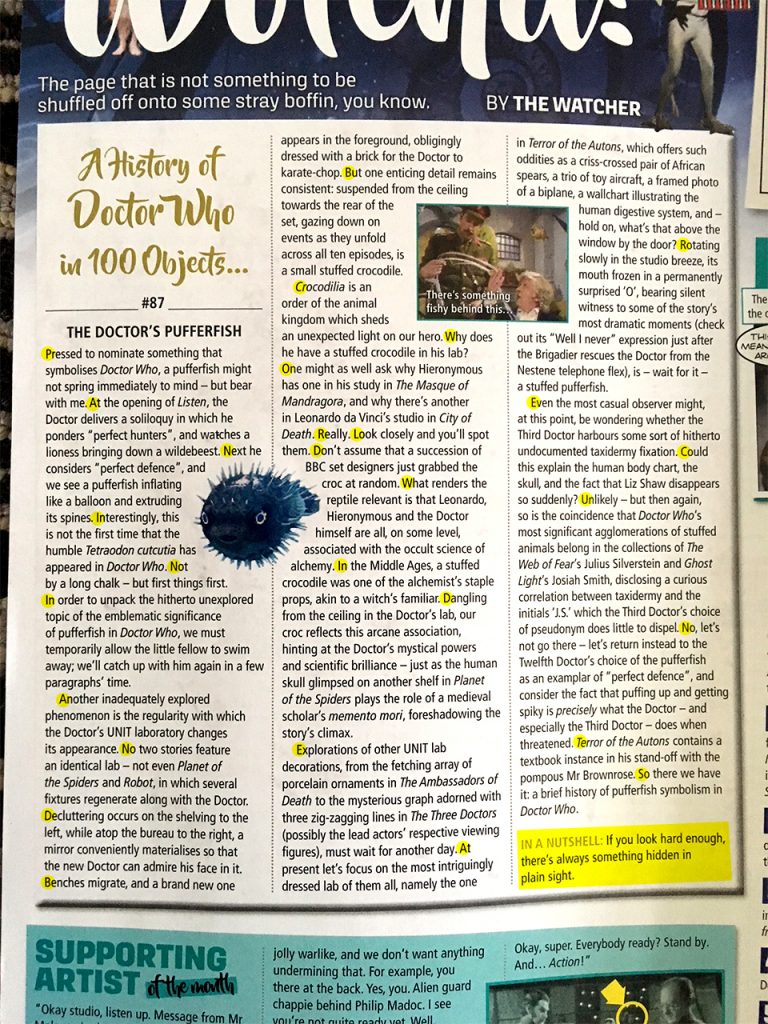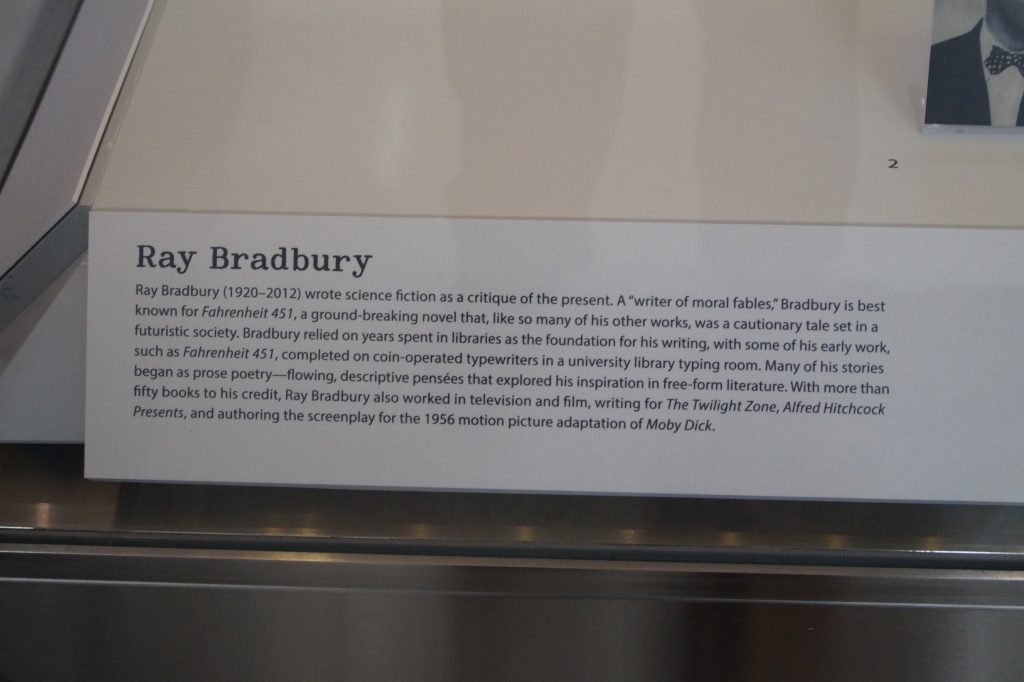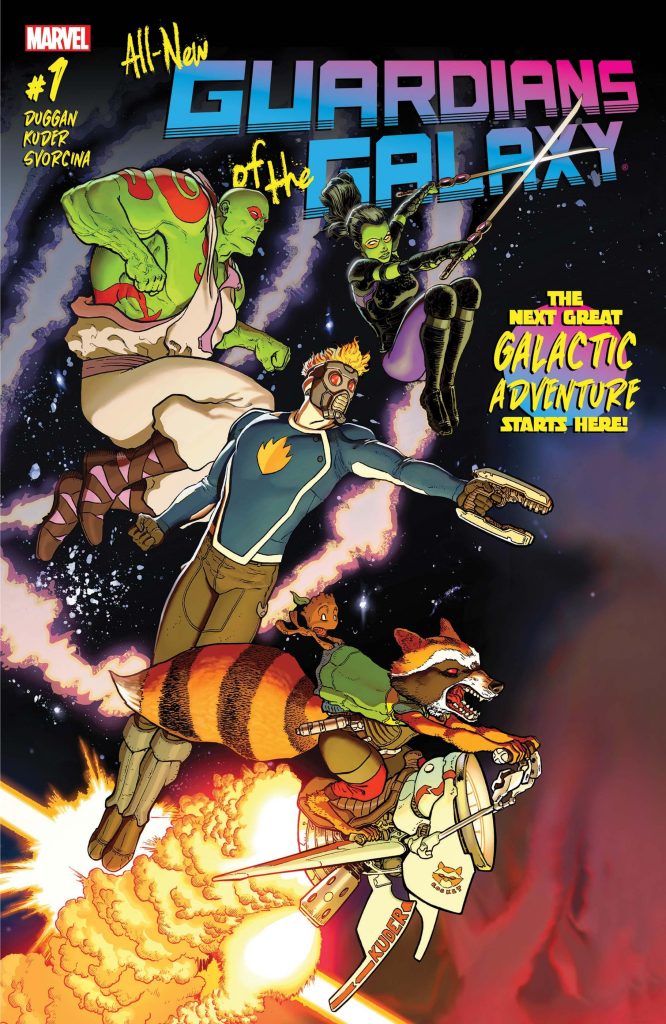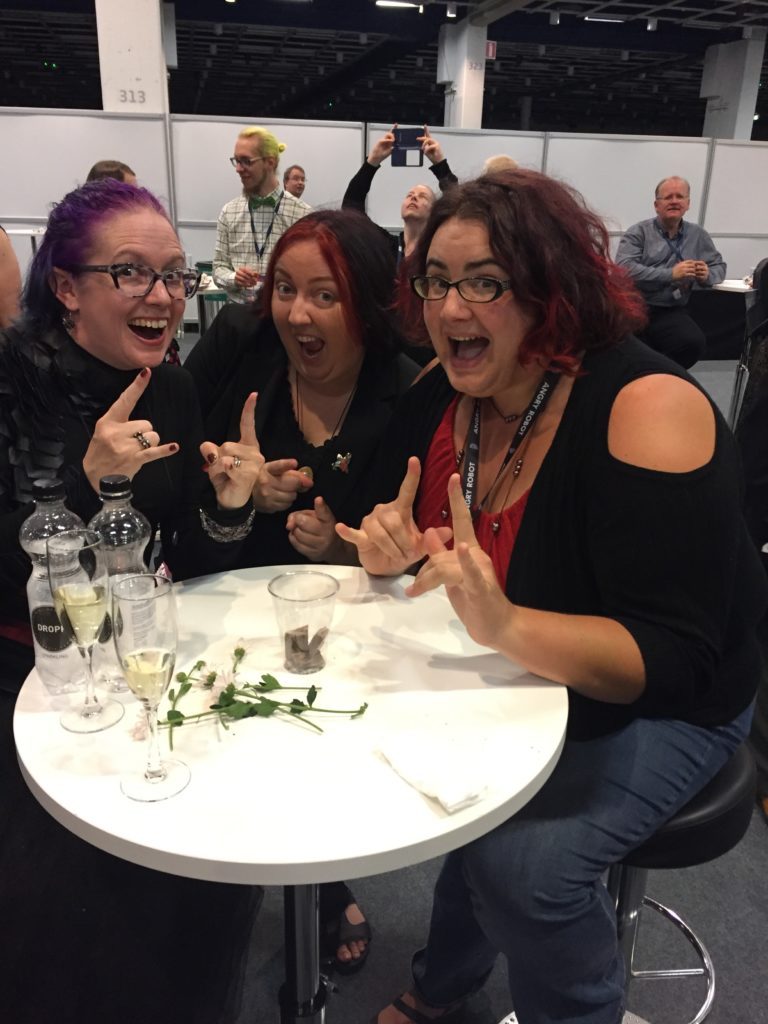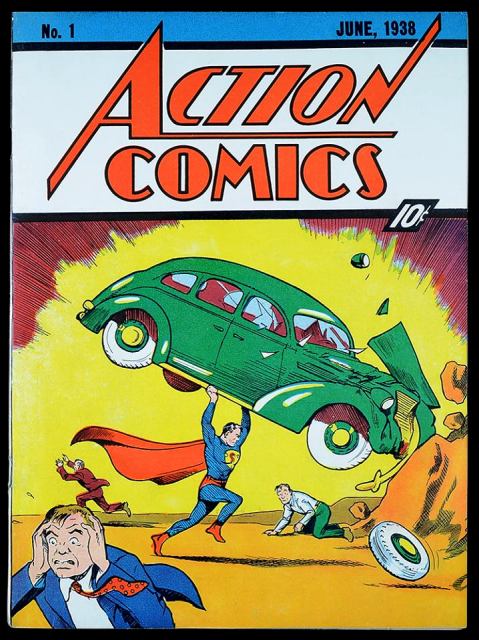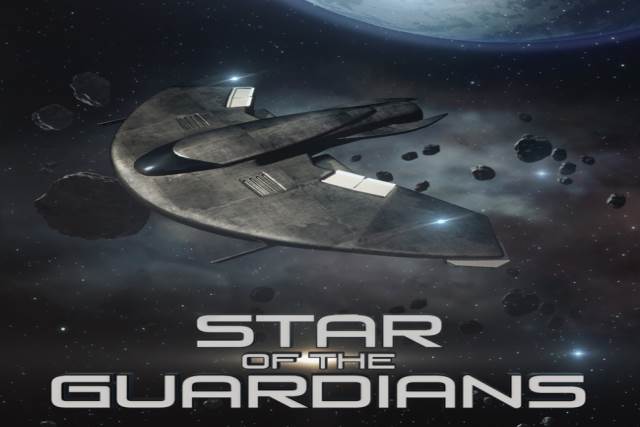(1) LEWIS & CLARKING AROUND. Charles Payseur, in “MAPPING SHORT SF/F: Part 2: Fun Short SFF” at Nerds of a Feather, leads readers through a highly interesting survey of where to find the fun stories in sff.
Fun. For some people, fun evokes childhood and a certain kind of carefree energy. For others, it means something more like excitement and adventure and novelty. Mapping fun short SFF is something of a challenge, not because I cannot point to works that I’d consider fun, but because fun is a weirdly nebulous term that, like most things, I probably define oddly in terms of genre. But, as that what I’m seeking to do in this series, I’ll do my best.
To me, fun as a genre operates a lot like horror does. It’s not so much about elements of world building or how the piece conveys message. It’s not about theme or about any one style. When I say it operates a lot like horror, what I mean is that they both are built around a feeling. Horror as a genre is defined (or at least I define it) by its ability to evoke fear and unease in the reader. Whether the story seeks to do that through gore or violence, or through atmosphere and suspense, doesn’t matter so much, because it’s all horror. Similarly, for a story to be fun, it has to be about evoking an emotion. Instead of fear, though, I’d say that fun is about joy. To me, fun SFF stories are those that seek to make the reader feel joyous. Which, given the times, is both an incredibly difficult and important mission….
(2) URBAN UPHEAVAL. James Davis Nicoll presents: “Twenty Core Speculative Fiction Works Featuring Notable Cities Every True SF Fan Should Have On Their Shelves”. The list includes —
- Cinnabar by Edward Bryant
- The House of Shattered Wings by Aliette de Bodard
- Dhalgren by Samuel R. Delany
(3) PAGES OF RAGE. Cat Rambo is taking submissions for “If This Goes On”
This project is born of rage and sorrow and hope. Rage at the way America has been stolen and how those thieves have been eating away at its infrastructure. Sorrow at the lives being destroyed in the sorrow as well as for the earth as its protections are stripped away by a kleptocratic and corrupt regime. Sorrow for the way words themselves have been distorted and twisted away from truth.
And hope. Because humans continue to progress and evolve, even though that climb is a rocky one and we slide back sometimes. We seem to have done so recently. And so this anthology, an attempt to rally, to inspire, and to awaken. Some stories will despair, but others will have the light we seek, lamps to light the path and show the pitfalls as we continue upwards.
This anthology is part of my resistance. I hope it will be part of yours as well.
The publisher says:
The anthology will contain up to thirty original stories including contributions from Steven Barnes, Andy Duncan, Chris Kluwe, Alexandra Renwick, and E. Lily Yu. Release is planned for 2018 mid-term election season in order to maximize engagement and encourage readers to take the long view when heading to the polls.
(4) ADDITION TO HUGO VOTING HISTORY. Kevin Standlee announces another gap has been filled-in.
We have updated the 1951 Retro-Hugo Award history page by adding the nominating and final ballot statistics for that year.
(5) CAN’T MAKE UP MY MIND. Four days left to answer Adam-Troy Castro’s poll question –
Which way would you rather be indecisive?
— Adam-Troy Castro, Titan of Awesomeness (@adamtroycastro) November 2, 2017
(6) CONSTRUCTION CREW. Jeffe Kennedy tells how she tapped the SFWA Forums for useful help in “Building Worlds with SFWA” at the SFWA Blog.
Still, when I went to self-publish a whole new series, to be safe as possible and avoid any trouble, I wanted it to be very clearly an entirely different world. The “easy” way to do that, I decided, was to give this world two moons. It also fit in thematically with the magic system I had in mind, as well as the partnership between enemies that formed the core of the story.
One big problem: I’m a biologist, not an astrophysicist (or whatever discipline this sort of thing falls under) and I had zero clue how the presence of two moons would affect the world.
So, I asked on the SFWA forums! I did not expect what I got: an immediate, detailed deluge of information from how the moons themselves would look, to their phases and orbits, to their effects on the tides, etc. It was amazing and I used almost all of it. By the end of the series—I’m up to four books now—I might indeed use every bit.
(7) EXTIRPATE! Did you know “Dalek operator” is a job? Or that one of them is unemployed today? And that he issued a little F-you on the way out the door? The Gallifrey Times has the story: “Nicholas Pegg fired after including a cryptic offensive message in DWM”.
Nicholas Pegg is known to fans as one of the main Dalek operators since 2005, but he has also been the man behind the entertaining Wotcha column on the final page of Doctor Who Magazine. But not anymore. It was first pointed out in the Mirror that Pegg, under the pen name The Watcher, left a cryptic message in his column in issue #518 of DWM.
If you take the first letter of every sentence, it spells out: Panini and BBC Worldwide are c*nts.
Panini are the publishers of the magazine, while the BBC distributes the TV series.
There is even a clue at the end, as Pegg himself writes, “If you look hard enough, there is always something hidden in plain sight.”
A BBC Worldwide spokesman told the Mirror:
“The matter was raised with the publisher who has dismissed the writer.”
It was also revealed that Pegg was not expected to be involved in Series 11.
It’s unknown why he included this attack…
(8) ON DISPLAY. In the foyer of San Francisco Airport’s Terminal 2 is a display of famous writers’ typewriters, including the one used by Orson Welles, another belonging to Tennessee Williams, and Ray Bradbury’s own, below. The photographer warns that the exhibit is in the secure area of the terminal, so you can’t casually wander through the airport to see it.
(9) NEXT TREK. Popular Mechanics asked “8 Sci-Fi Writers on Where Star Trek Should Go Next” – Kameron Hurley, Mur Lafferty, Christopher Brown, Rob Boffard, Genevieve Valentine, Elizabeth Bonesteel, Annalee Newitz, and Charles Yu.
By Mur Lafferty, author of Six Wakes
I’ve always been fascinated by the transporter and the various capabilities it has. The fact that the transporter saves a limited-time backup of every person it transports was only touched on a few times in any of the series. This makes sense; there are too many ways it could be abused as a Deus Ex Machina fix for half the problems they come across in the series. (Oh, Tasha got killed by a black goo? It’s OK, we saved her DNA and can print you a new one right away, Captain!)
Still, putting aside the difficulties surrounding the aging and dead actors, the ultimate Star Trek show would be for a Ferengi-financed hacker to gain access to the transporter traces of every member of every Star Trek show and bring them all back.
The new Star Trek crew would be assigned the many-season rescue of each character from all the other shows. The characters would be mixed up and scattered around the universe. For example, the Klingons would be having gladiatorial battles with Kirk and Picard to finally settle the greatest debate to plague my generation. (Team Picard all the way.)
There would be a side romantic plot with Troi, Worf, every version of Dax, and Alexander living on Risa. Speaking of Alexander, all the kids, Nog, Jake, Alexander, Molly, and young Wesley, could have a Risa-based Stand By Me-kind of adventure. Riker and Bashir could be stranded on an all-male planet where no one is impressed by them. Bones and Data could have an Odd Couple/Buddy Cop kind of adventure. I can see The Doctor, Crusher, Bashir, Pulaski, and Phlox in their own ER-type story.
I could go on, but you get the idea. It’s always a good idea to limit your tech when you make it “oh dear God, that thing is too powerful!” But it’s also a possibility to make a compelling plot about the abuse of said powerful machine when it’s put in the hands of an incompetent, or a villain.
(10) BANGING WITH WHEATON AND NEWHEART. Although I lost interest in Big Bang Theory awhile ago, I may have to watch this episode:
Remember, #BigBangTheory is new tonight with @wilw and @BobNewhart, followed by the return of #YoungSheldon 8/7c US/Canada
— Bill Prady ?? (@billprady) November 2, 2017
(11) CASH IN POINT. There could be a Twilight Zone reboot coming to CBS All-Access.
CBS has announced a new Twilight Zone anthology series from Get Out director Jordan Peele, over 50 years after the iconic scifi series ended its initial run. This comes about five years after the studio tried and failed to reboot the series with X-Men director Bryan Singer, and in the wake of Bioshock creator Ken Levine’s stalled attempt to revive the franchise as an interactive movie or series. Right now, it’s not clear whether Peele’s show has already been picked up for a series, or if the project is simply in development.
(12) D POTTER OBIT. Bay Area fanzine fan D Potter passed away in her Oakland apartment (probably on October 25) reports Sue Rae Rosenfeld on Facebook.
Fancyclopedia lists the amateur press associations she was active in over the years:
Apa-nu, A Women’s APA, APA-Q, Myriad, Mixed Company (of which he has been OE), Spinoff, MISHAP, ALPS, FAPA, Intercourse. She was a co-founder and OE of ALPS [The Amateur Long-Playing Society.]
She was Fan GoH of Balticon 16 in 1982.
(13) COMICS SECTION
- Darrah Chavey would never drop a bad pun like “the umpire strikes back,” but I would: it came to mind when I saw his linked installment of Pearls Before Swine.
- Rich Lynch found a rare Bradbury joke in Mutts!
(14) KSR. Kim Stanley Robinson is interviewed by José Luis de Vicente for CCCBlab: “Angry Optimism in a Drowned World: A Conversation with Kim Stanley Robinson”.
In New York 2140, I wanted sea level rise to be significant enough to make Lower Manhattan like a Venice, to be a kind of giant symbol of the current situation with climate change. For that reason I pushed it out to the year 2140, which is 120 years from now. For reasons of plausibility: it takes that long to get that much of a sea level rise, which is what I wanted for telling my story.
The truth is that we are actually already at that moment of climate change and crisis. The political project that my novel discusses really ought to be enacted now, not 120 years from now. In the real world, what we’ve got is a necessity for our economic system to take damage to the ecosystem into account, and pay for that damage.
The way that we create energy and the way that we move around on this planet both have to be de-carbonized. That has to be, if not profitable, affordable. Humans need to be paid for that work because it’s a rather massive project. It’s not that it’s technologically difficult (we already have the solar panels, the electric cars, we have the technical problems more or less solved in prototype) but the mass deployment of those is a huge human project, equivalent of everybody gathering together to fight World War II. Everybody agrees that, yes, this is important enough that people’s careers, lives, be devoted to the swapping out of the infrastructure and the creation of a de-carbonized, sustainable, physical plan for the rest of civilization.
Well, this isn’t the way capitalism works, as currently configured; this isn’t profitable. The market doesn’t like it. By the market I mean – what I think everybody means, but doesn’t admit – capital, accumulated capital, and where it wants to put itself next. And where it wants to put itself next is at the highest rate of return, so that if it’s a 7% return to invest in vacation homes on the coast of Spain, and it’s only a 6% rate of return to build a new clean power plant out in the empty highlands of Spain, the available capital of this planet will send that money and investment and human work into vacation homes on the coast of Spain rather than the power plants. It’s just the way it is and there is no control over that except for nation-state governments, each one looking at its own responsibility and power and feeling in competition with others, not wanting to lose its differential advantage. So, If Spain were to do a certain amount for its country, but was sacrificing relative to international capital or to other countries, then it would be losing the battle for competitive advantage in the capitalist system.
(15) MARKET NEWS. The submissions window will soon close for Glass & Gardens: Solarpunk Summers:
GLASS & GARDENS: SOLARPUNK SUMMERS
Anthologist: SarenaUlibarri
Open for Submissions: August 15, 2017 – November 15, 2017
Expected Publication: Summer 2018
Story Length: up to 8,000 words
Payment: $0.01 per word + contributor copy Solarpunk is a type of eco-conscious science fiction that imagines an optimistic future founded on renewable energies. It might take place in a wind-powered skyscraper or on a solar-powered robotic farm, in a bustling green-roofed metropolis or in a small but tech-saavy desert village. Often coupled with an art nouveau aesthetic, and always inclusive and diverse, solarpunk stories show the ways we have adapted to climate change, or the ways we have overcome it….
(16) HALLOWEEN LEFTOVERS. Hate to think I almost missed this – let’s start with the intro from Nerdist, “Wayne Brady Sings “Thriller” Like a 1930s Jazz Song”.
The video starts with a nod to Cab Calloway and jumps right into the upbeat cover and ’cause this is “Thiller” (Thriller night!), PMJ even brought on a few tap dancers in order to pay homage to the iconic dance moves from the original video. They even worked in some Charleston moves for good measure. Is it weird that we’d want to see all the dancing in the original video with this era-specific spin?
(17) HANGOUT AND LEARN. Cat Rambo announces two upcoming online classes:
Sunday, November 5, 9:30-11:30 AM, Pacific time.
Tell, don’t show. Dump your information. Write in second person. Write in passive voice. Use adverbs. To heck with suspense.
Rules mark what’s difficult, not what’s impossible. There’s a whole range of exciting storytelling possibilities beyond them. Not every story needs to be in second person, but when it’s the right voice for the right story, it can be magic. The right information dump, written perfectly, can become a dazzling gymnastic feat of beauty, fascination, or humor.
Sunday, December 17, 9:30-11:30 AM, Pacific time.
There’s an art to food writing. Anyone who has read a professional restaurant review can tell you that. We react viscerally to descriptions of food. Our mouths water, our minds color with tastes we can almost experience. In fiction, this can be used to enrich world-building, and to further blur the lines between the reader and the text.
Join Cat and award-winning game writer, author, tech journalist Cassandra Khaw for a session where we will discuss food writing, the sensualities of taste, how to incorporate and interpret our understanding of food, and how all this can be used to shape one’s stories.
(18) INDUSTRY ROLE. Here’s a thread on what sensitivity readers actually do.
https://twitter.com/byobrooks/status/926136133242802176
(19) TO SERVE FAN. John C. Wright has taken up the quest of reading in their order of publication the Conan stories of Robert E Howard. This necessarily (?) required a fling at Damon Knight for belittling Howard in an early 1950s magazine piece (which you can find in the 1956 collection, In Search of Wonder: Essays on Modern Science Fiction).
Here, for example, is a quote from the loathsome Damon Knight. If the reader is surprised I use so harsh a word for this well-known figure in science fiction, please reflect that he is not well known for any creative writing, only for his ludicrous claim to be a critic…
…We need not dwell long here in the chamberpot of Mr. Knight’s performance as a critic. I am content with noting that there is not a word of actual criticism anywhere in the passage. It is merely a stream of insults against Robert E Howard, as everything from unintelligent to maniacal to emotionally crippled to sick, with occasional flippant insults against Mr. Howard’s fans and admirers, not to mention studied insults against other luminaries of the field.
The ”not well known” fiction of Damon Knight includes his frequently-anthologized “To Serve Man,” the basis for a famous episode of The Twilight Zone and a 2001 Retro Hugo winner. His criticism was recognized with a 1956 Hugo for Best Reviewer. Surely someone who has accepted as many Hugo nominations as Wright respects the imprimatur of the Hugo Award. No, really.
(20) BIG MONTH FOR GUARDIANS OF THE GALAXY. Marvel has declared a Thanksgiving feast for Guardians of the Galaxy fans, serving up multiple comics about the team, and Rocket and Groot individually.
Week of 11/6
ALL-NEW GUARDIANS OF THE GALAXY #1
A NEW ERA OF COSMIC ADVENTURE BEGINS HERE! Double ships every month! The Guardians of the Galaxy have taken off into space once more, on their biggest and weirdest misadventures yet! Kicking things off with the biggest heist they’ve ever tried, we join Star-Lord, Rocket Raccoon and company as they blast their way through the galaxy, the peacekeepers of the Nova Corps hot on their tails. And once they find themselves caught in a war between The Collector and The Grandmaster, there will hardly be time to explain why Groot can’t grow any bigger, what Gamora is searching for or why Drax has sworn off violence! But don’t worry, we will — with a new twice-monthly schedule, All-New Guardians of the Galaxy has space for ALL your Marvel Cosmic needs!
GUARDIANS OF THE GALAXY: MISSION BREAKOUT #1
The Collector’s many-worlds-famous collection is opening its doors to the public — and you won’t believe the star attraction. Only the Guardians can break through Taneleer Tivan’s security and BREAK OUT! The Marvel Universe story of Disney’s newest, raddest ride!
GUARDIANS OF THE GALAXY: MOTHER ENTROPY #1
The Guardians owe everyone on Knowhere money, so they’re forced to do a job for the local police. But that gets them running afoul of Pip the Troll and a mysterious entity known only as Mother Entropy. And that’s when the fun begins.
Week of 11/13
ROCKET #1
GET READY FOR A LIFE OF SPACECRIME! It’s a dirty universe out there, even when you’re not regularly mistaken for trash-foraging vermin. And it’s about to get dirtier. He thought his paws were clean, that he was on the up-and-up. But then an old flame swam back into his life, and he was back in the game… the heist game. If you need a safe cracked, a vault busted or a score taken…ask for Rocket. Just don’t call him a raccoon.
Week of 11/27
I AM GROOT #1
GROOT IN HIS OWN SERIES, SMALLER AND BETTER THAN EVER! When the Guardians of the Galaxy get caught in a wormhole, a smaller-than-normal Groot is separated billions of light-years away from the team. Falling to a planet below, Groot discovers he is on an entirely alien and unknown world full of strange creatures and societies. Seriously underdeveloped and with nobody who can understand him, Groot will need to make the journey to the center of this world and find the way back to his family!
(21) ENTRY LEVEL. TIME Magazine tells “How Much You Can Earn in the Comic Book Industry — From Artist to CEO”.
Marvel and DC Comics are once again facing off in an epic box-office duel this month, with the release of Thor: Ragnarok and Justice League — two superhero films that, of course, have their roots in the comic book industry. Print isn’t dead to this world — the industry makes $800 million-a-year annually and employs tens of thousands to do so.
So how do you get started in this type of career? And more importantly, what does it pay?
Like any career in the arts, you can get started in the industry by going to school to and majoring in something that translates well into this world, like animation, sequential art, or illustration. Marvel artist Irene Strychalski recently told attendees of New York Comic Con she majored in sequential art and minored in animation at Savannah College of Art and Design. Other schools that comic book artists seem to gravitate towards include Ringling College of Art and Design and Rhode Island School of Design. However, if you don’t want the college experience, the Kubert School is a trade school in Dover, N.J. that offers a three-year training program.
I think Vox Day plans on skipping all these steps.
(22) ARCHEOLOGY. “I’m ready for my closeup”: new tech discoveries: “‘Big void’ identified in Khufu’s Great Pyramid at Giza”.
It is not known why the cavity exists or indeed if it holds anything of value because it is not obviously accessible.
Japanese and French scientists made the announcement after two years of study at the famous pyramid complex.
They have been using a technique called muography, which can sense density changes inside large rock structures.
The Great Pyramid, or Khufu’s Pyramid, was constructed during the reign of Pharaoh Khufu between 2509 and 2483 BC.
(NPR also covers, but their diagram isn’t as readable: “Scientists Say They’ve Found Hidden Space In Great Pyramid Of Giza”
(23) THINK NICK FURY. Samuel L. Jackson talks Game of Throne newcomers through the basics as only he can. “The first thing you need to know about this world is…no, not dragons…**** those dragons! Focus!”
[Thanks to Mark Hepworth, John King Tarpinian, James Davis Nicoll, Stephen Burridge, Carl Slaughter, Cat Rambo, Rich Lynch, Mike Kennedy, Chip Hitchcock, Martin Morse Wooster, Cat Eldridge, Darrah Chavey, and Tasha Turner for some of these stories,. Title credit goes to File 770 contributing editor of the day Bill.]

